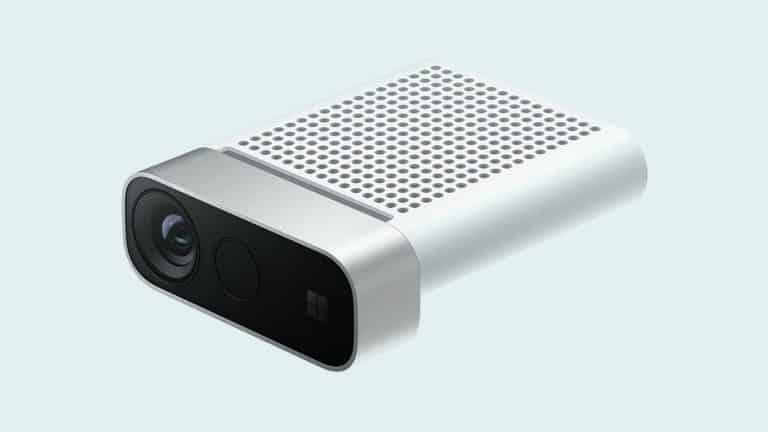At the Mobile World Congress (MWC) in Barcelona, Microsoft unveiled the Azure Kinect DK, writes Silicon Angle. It is a cloud-connected sensor that can perform complex tasks, such as checking components that come off a conveyor belt.
The system is the third evolution of a product that was initially sold as an accessory for video games. The original version of the Kinect was withdrawn from the market in 2015, but the underlying technology was reused. Now it is a business application that is able to run artificial intelligence (AI) algorithms. The Azure Kinect DK further expands these functions with a lighter and smaller form factor.
It features a 12-megapixel camera, a depth sensor and seven microphones that pick up sound in 360 degrees. An accelerometer and a gyroscope have also been added. On the back is a set of ports that allows you to connect multiple devices in the same location to synchronize data sets.
The device sends sensor data to Microsoft’s Azure cloud platform, where companies can analyze this data using the tech giant’s various managed AI services.
HoloLens 2
Microsoft also presented the HoloLens 2 at MWC. The HoloLens 2 and the Azure Kinect DK share a depth sensor that can work in tandem with a set of new mixed reality services that were unveiled at MWC.
The first service, Azure Spatial Anchors, is designed to simplify the development of applications for multi-user augmented reality. It uses camera images from devices like the Azure Kinect DK to make sure that virtual objects appear in the right place for each participant.
The other service is Azure Remote Rendering. This provides an environment for rendering virtual objects, such as building plans that are too complex to generate locally on the HoloLens or at the deck cap.
This news article was automatically translated from Dutch to give Techzine.eu a head start. All news articles after September 1, 2019 are written in native English and NOT translated. All our background stories are written in native English as well. For more information read our launch article.